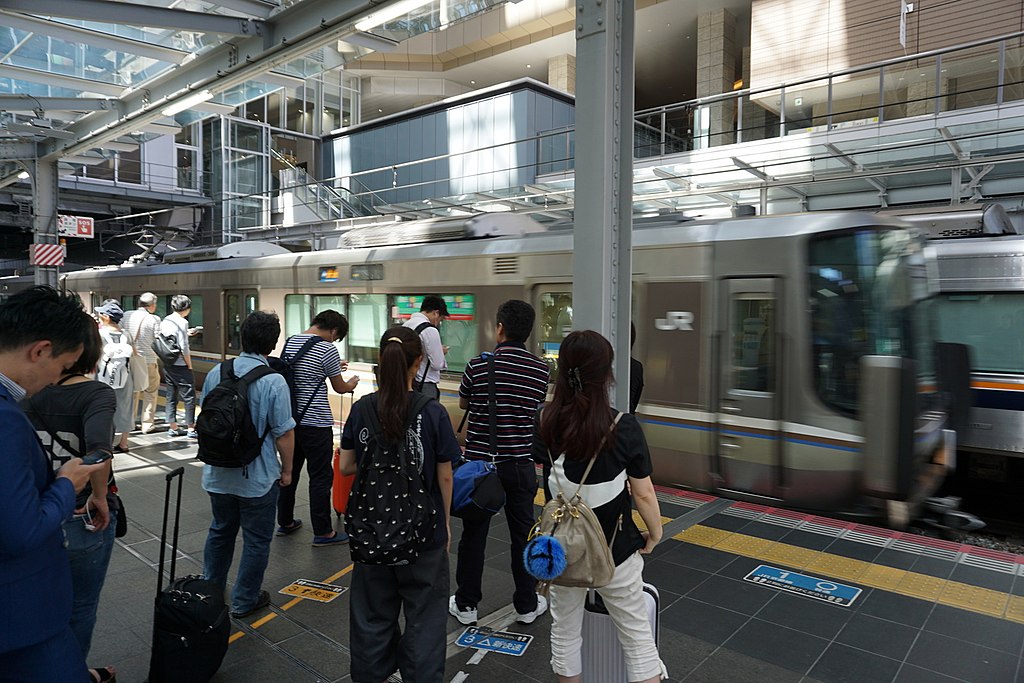Doing an MBA in France this past year, I’ve often been frustrated with train service – a particular highlight was being stuck in a train for an hour while protesters throw fireworks at the train. I’ve watched the news about unprofitable rail companies and debates about national rail in Europe. Meanwhile some of the spinoffs of Japan’s former national rail company are recording record profits.
What, then, is the secret to some privatized Japanese rail companies’ profitability? Has privatization of the railways really been a success in Japan?
Japanese National Railways was privatized in 1987 and broken into six regional rail companies and one freight company. Currently, five of those companies – JR East, JR Central, JR West, JR Kyushu, and JR Freight – are in the black. JR East, West, Central, and Kyushu are publicly traded.
First, privatization allowed the JRs to operate commercial and real estate businesses. Today, non-transportation revenues make up roughly a third of JR East’s revenues, and nearly 60% at JR Kyushu. JR East operates shopping centers, restaurants, and hotels. Other large rail providers in the United States, United Kingdom, and France manage large real estate portfolios but for the most part do not directly operate businesses in the buildings they own.
Second, the JRs have profitable Shinkansen (bullet trains) and express trains that subsidize other smaller, unprofitable lines.
Third, the JR companies have had to become extremely efficient on their most profitable lines (Shinkansen) due to competition from air travel. JR Central estimates that a Tokyo-Osaka trip takes 2 hours and 22 minutes on the Shinkansen, and 2 hours and 40 minutes on a plane, including travel time to the airport.
This excellent 2014 presentation from Hisako Nishio of JR East’s Singapore office talks about how improvements in efficiency in terms of operation (punctuality, scheduling, and short turn-arounds), and maintenance (track, signalling, etc.) leads to lower capital expenditure needs. For example, 12 minute Shinkansen turn-around at Tokyo station means you need fewer platforms. Efficiency also incentivizes greater passenger use.
This has helped the profitable JRs rely on little to no subsidies from the central government. By comparison, the UK government subsidised National Rail to the tune of £4.2 billion in 2016-2017, and gave £5.7 billion in loans to Network Rail, the public body that manages the United Kingdom’s rail infrastructure. The fragmented system charges the highest fares in Europe. An interesting point is that in the United Kingdom, rail was privatized by splitting up the tracks and train operators, unlike the regional division in Japan. Commentators have suggested this as one reason for inefficiency in the United Kingdom.
There are caveats, however. Rail privatization did have costs in Japan. The government took on trillions in long-term JNR debt, putting a ¥14 trillion burden on taxpayers. Privatization also cost tens of thousands of jobs.
Furthermore, the future of the JRs is not assured. JR Hokkaido, the unprofitable operator, is a case in point. The government just promised ¥40 billion more to help the operator maintain its network. JR Hokkaido’s challenges are both geographic and demographic; one-eighth of the firm’s stations had one passenger or less a day in 2016. It’s also been rocked by safety scandals in recent years. Other JRs have the buffer of real estate, advertising, and profitable Shinkansen, but how long will those last?
This is exactly the problem that France’s embattled SNCF would face if privatized. The French rail system – like the system in Hokkaido – is weighed down by small, underused regional stations. SNCF received €14 billion in subsidies from the government in 2016, and still had €47 billion in debt in 2017, much of which the French government has now promised to absorb in return for some concessions. Unlike the profitable JRs on Honshu that benefit from Shinkansen, state-owned SNCF will continue to be burdened by regional lines that can only survive with government support.
Finally, a quick note on JR Freight. While JR Freight certainly doesn’t have Shinkansen, a shortage of truck drivers in Japan has been a tailwind for JR Freight on key lines. Media have also highlighted the appointment of former NYK Line vice-president and Nippon Cargo Airlines president Tadamasa Ishida as chairman in 2013. The transportation industry expert is seen as crucial in improving profitability and efficiency at the firm.
In summation, the privatization of Japan’s national rail company was a success in areas with dense populations and because rail operators were allowed to expand into other other lines of business which helps them shoulder the costs to upkeep and improve rail services. Finally, the fact that the rail companies were split up by geographic area and not functionality (tracks, trains, etc) has also helped them achieve efficiency to keep them competitive. While each country has its own unique political and infrastructure needs, lessons from the JRs provide an interesting point of comparison.
Eleanor worked for five years as a correspondent in the Tokyo bureau of The Wall Street Journal covering economy, finance and Japan's butter shortage. She is a graduate of Georgetown University, and her favorite animal is a capybara.






















